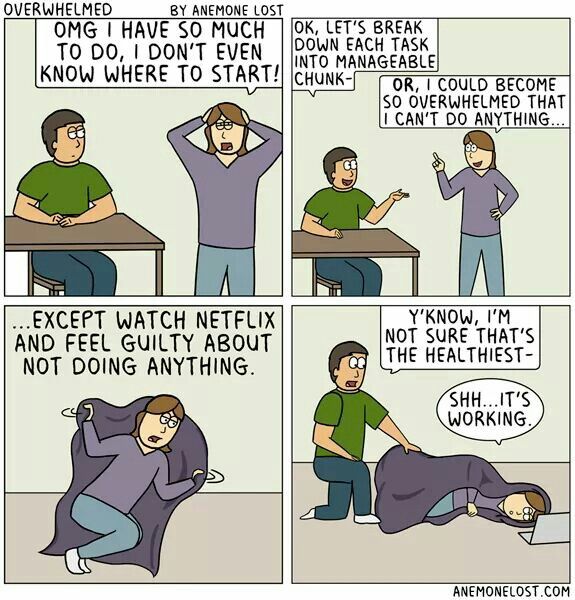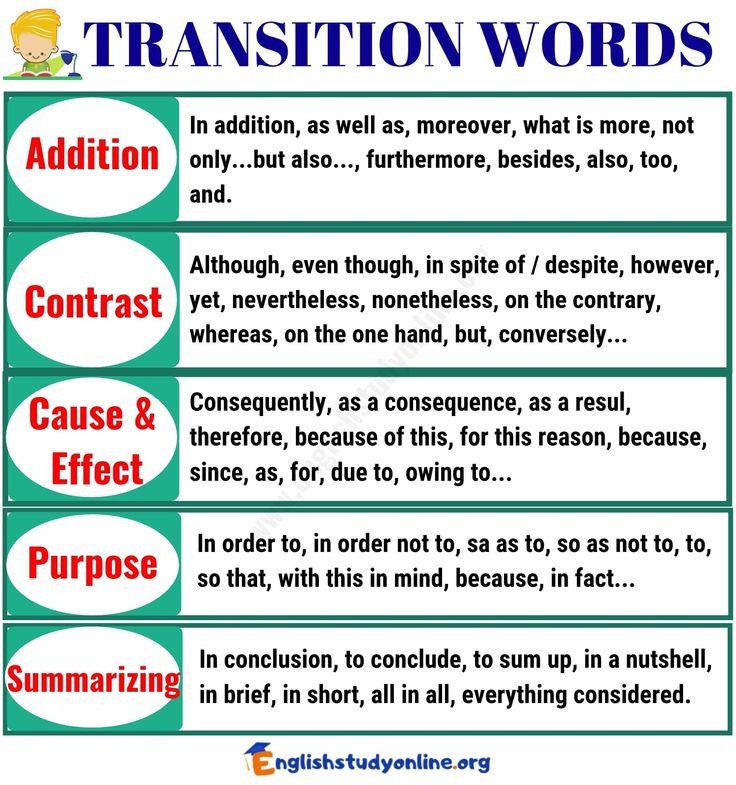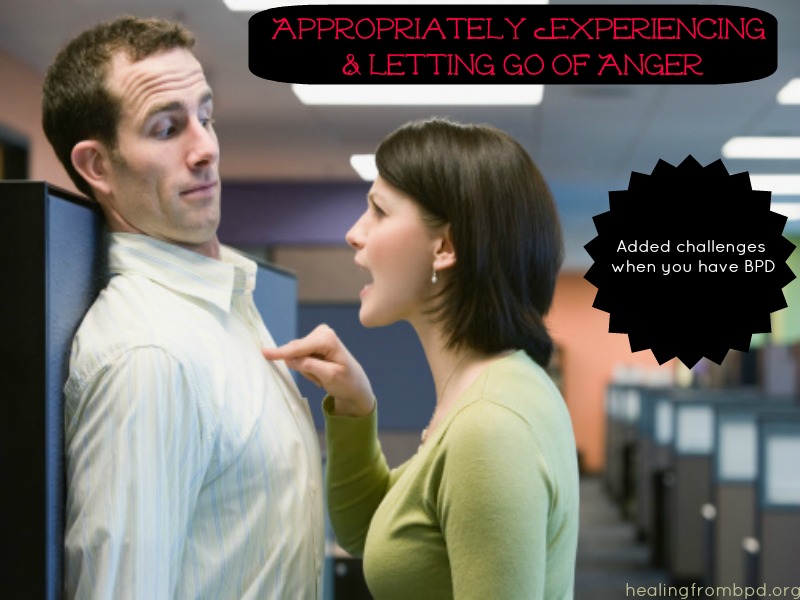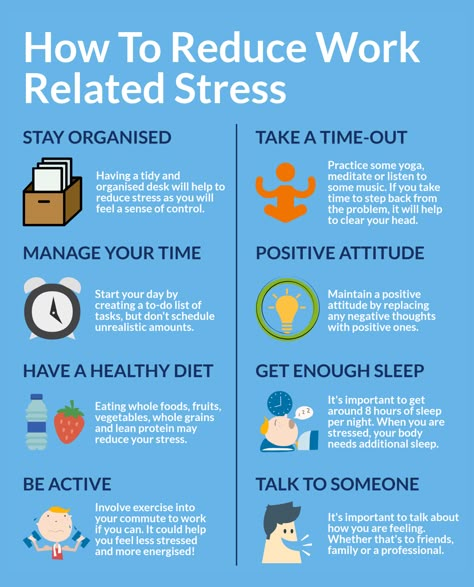How do i calm down from anxiety
How to Calm Down Fast
When stress, anxiety or fear flare up, these 9 techniques help keep you calmer.
Spread the love
We all get stressed and agitated sometimes. It’s a product of our busy, over-scheduled lives and living with circumstances we can’t control.
When you’re stressed or anxious, it causes your body to release stress hormones such as cortisol and adrenaline, which can increase how stressed you feel. You may also feel other symptoms, like headaches, dizziness and depression. Long term stress can negatively affect your weight, heart and chronic health conditions. In addition to your physical health, untreated stress can have a negative effect on other areas of your life, including your mental health, professional life and social relationships.
When you’re feeling stressed, anxious, scared or nervous – or you have the urge to lash out – the last thing you want to hear someone say is, “Just calm down.” That never works. But here are 9 calming techniques that do work – and they work quickly at that.
- Just breathe. Breathing seems like the most natural thing in the world. But there are ways to breathe mindfully that help calm our bodies and minds almost instantly. The 4-7-8 breathing technique, known as a “relaxing breath,” is especially effective:
-
-
-
- Breathe in quietly through your nose for 4 seconds
- Hold the breath for 7 seconds
- Exhale forcefully through your mouth with a “whooshing” sound for 8 seconds
- Repeat as needed
-
-
-
- Close your eyes and count to 10 slowly. It really works! If you need more time, count to 20 or count backwards once you reach whatever number you are counting up to. Just taking a few minutes to concentrate on something other than your stress will do wonders for your mood.
- Chew a piece of gum. Studies show that the slow, methodical act of chewing gum keeps blood flowing to the brain, allowing you to concentrate better and keep a level head during a bout of anxiety.
 It also helps you resist the urge to reach for a less-healthy option, like a pint of ice cream or a cocktail, when you’re stressed.
It also helps you resist the urge to reach for a less-healthy option, like a pint of ice cream or a cocktail, when you’re stressed. - Phone a friend – preferably a funny one. Touching base with someone you love can provide instant calm. Laughing is proven to release endorphins, the “feel-good chemicals” in our brains that help release tension and elevate overall mood.
- Smell lavender. Light a lavender candle or soak in a lavender bubble bath. In aromatherapy, lavender is one of the stars of stress-relief, along with chamomile, rose, ylang-ylang and citrus.
- Curl up with your cat or dog. Just 10 minutes of petting your furry pal can reduce stress hormones and promote a feeling of calmness.
- Listen to calming music. Cue up your favorite tune, but nothing with a frantic beat or depressing lyrics. Then sit back, close your eyes and concentrate on the words and the rhythm. Go ahead and sing along if you wish.
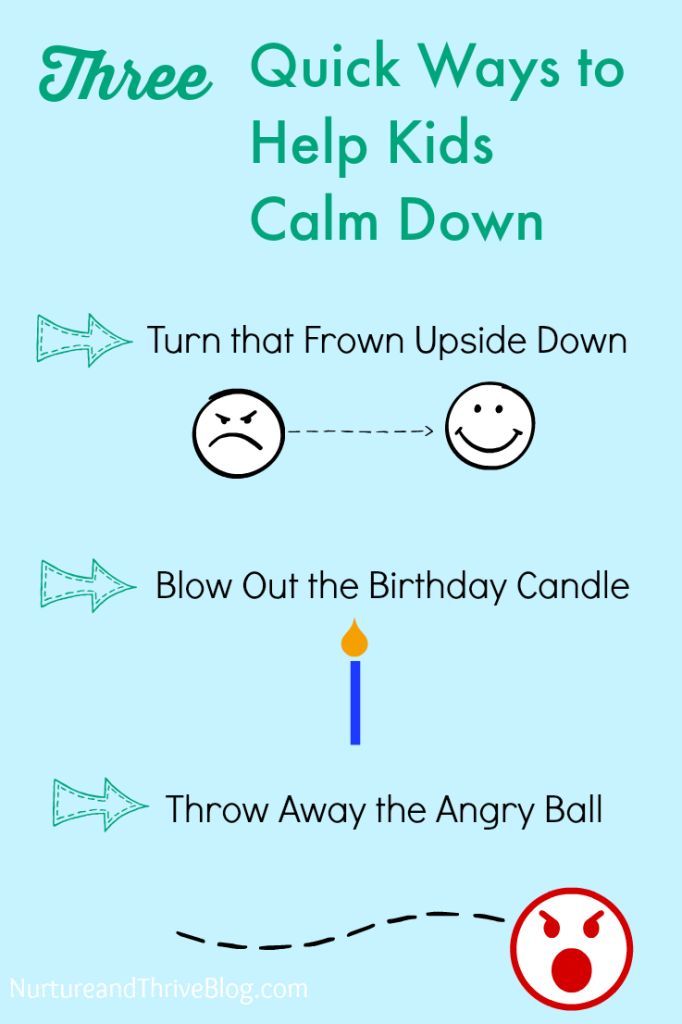 Studies show singing releases endorphins.
Studies show singing releases endorphins. - Exercise your body. Physical activity of any kind helps release stress. Take a 15-minute timeout for a brisk walk around the neighborhood; the fresh air will also help clear your head. If you’re stuck indoors, try a few reps of jumping jacks, jog up and down the stairs or take a spin on your exercise bike.
- Exercise your mind and spirit. Practice yoga, meditate, get a massage, write in your journal, give yourself a pedicure or take a relaxing nap.
If you find these calming techniques aren’t helpful, explore other methods that may provide longer-term relief for your stress and anxiety. Eat right, avoid alcohol and caffeine, exercise regularly, always get enough sleep, and if needed, consider making an appointment with a mental health professional.
Copyright 2020 © Baldwin Publishing, Inc. All rights reserved.
Health eCooking® is a registered trademark of Baldwin Publishing, Inc.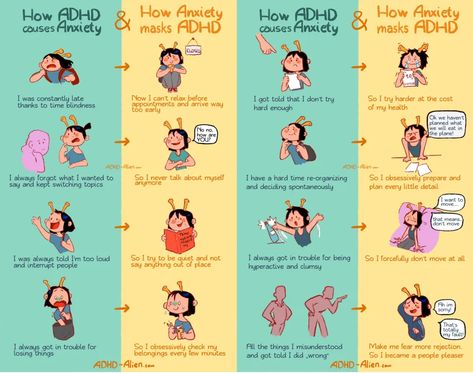 Cook eKitchen™ is a designated trademark of Baldwin Publishing, Inc. Any duplication or distribution of the information contained herein without the express approval of Baldwin Publishing, Inc. is strictly prohibited.
Cook eKitchen™ is a designated trademark of Baldwin Publishing, Inc. Any duplication or distribution of the information contained herein without the express approval of Baldwin Publishing, Inc. is strictly prohibited.
Date Last Reviewed: November 13, 2020
Editorial Review: Andrea Cohen, Editorial Director, Baldwin Publishing, Inc. Contact Editor
Medical Review: Perry Pitkow, MD
Learn more about Baldwin Publishing Inc. editorial policy, privacy policy, ADA compliance and sponsorship policy.
No information provided by Baldwin Publishing, Inc. in any article is a substitute for medical advice or treatment for any medical condition. Baldwin Publishing, Inc. strongly suggests that you use this information in consultation with your doctor or other health professional. Use or viewing of any Baldwin Publishing, Inc. article signifies your understanding and agreement to the disclaimer and acceptance of these terms of use.
22 Things to Do When You’re Anxious or Angry
We all worry and get upset from time to time.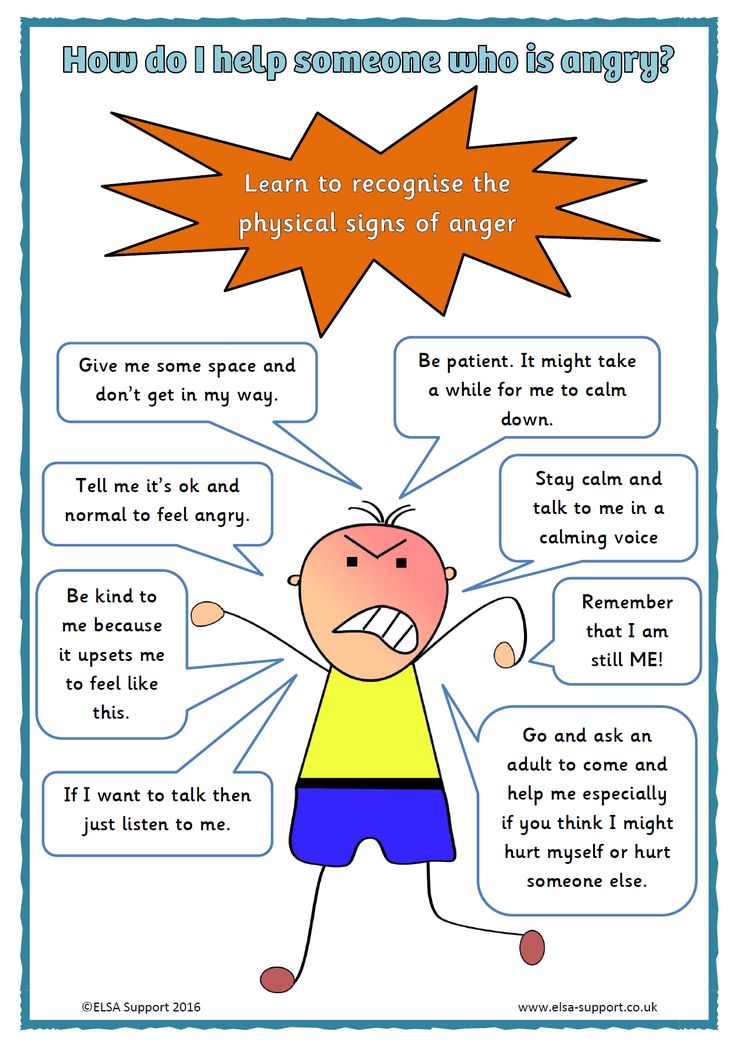 It’s a normal part of life.
It’s a normal part of life.
But what happens when that anxiety or anger takes over, and you can’t calm down? Being able to calm yourself in the moment is often easier said than done.
That’s why having a few strategies you’re familiar with can help you when you’re feeling anxious or angry. Consider adding these calming tactics to your toolbox.
Here are some helpful, actionable tips you can try the next time you need to calm down.
1. Breathe
“Breathing is the number one and most effective technique for reducing anger and anxiety quickly,” says Scott Dehorty, LCSW-C, of Delphi Behavioral Health.
When you’re anxious or angry, you tend to take quick, shallow breaths. Dehorty says this sends a message to your brain, causing a positive feedback loop reinforcing your fight-or-flight response. That’s why taking long, deep calming breaths disrupts that loop and helps you calm down.
There are various breathing techniques to help you calm down. One is three-part breathing. Three-part breathing requires you to take one deep breath in and then exhale fully while paying attention to your body.
Three-part breathing requires you to take one deep breath in and then exhale fully while paying attention to your body.
Once you get comfortable with deep breathing, you can change the ratio of inhalation and exhalation to 1:2 (you slow down your exhalation so that it’s twice as long as your inhalation).
Practice these techniques while calm so you know how to do them when you’re anxious.
2. Admit that you’re anxious or angry
Allow yourself to say that you’re anxious or angry. When you label how you’re feeling and allow yourself to express it, the anxiety and anger you’re experiencing may decrease.
3. Challenge your thoughts
Part of being anxious or angry is having irrational thoughts that don’t necessarily make sense. These thoughts are often the “worse-case scenario.” You might find yourself caught in the “what if” cycle, which can cause you to sabotage a lot of things in your life.
When you experience one of these thoughts, stop and ask yourself the following questions:
- Is this likely to happen?
- Is this a rational thought?
- Has this ever happened to me before?
- What’s the worst that can happen? Can I handle
that?
After you go through the questions, it’s time to reframe your thinking.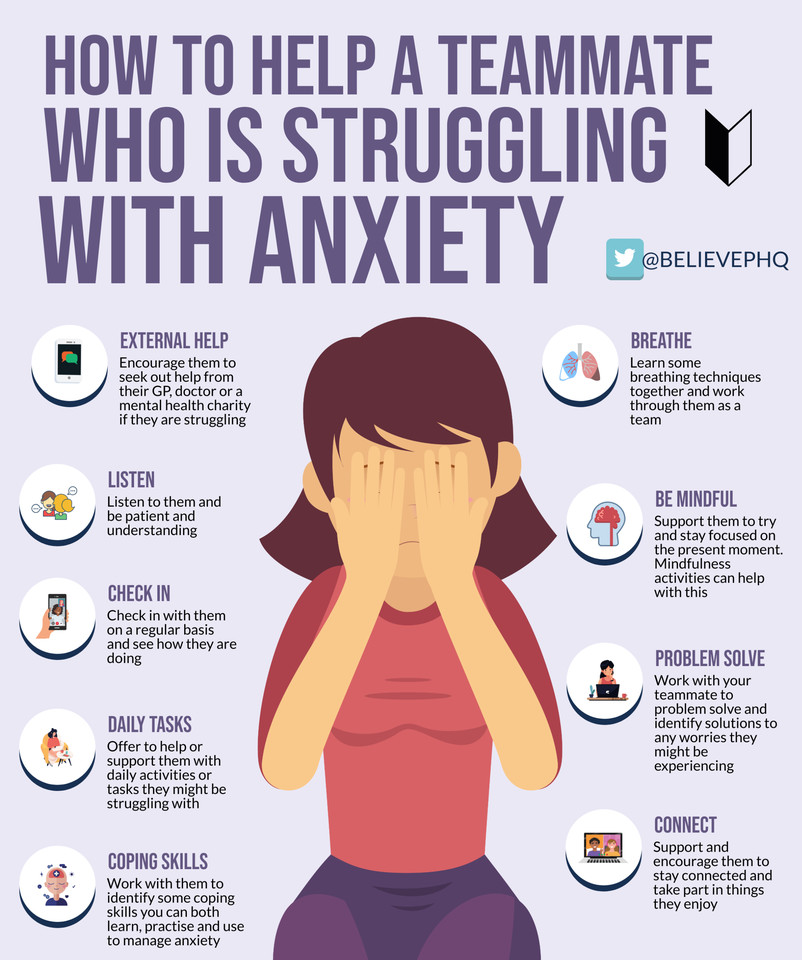 Instead of “I can’t walk across that bridge. What if there’s an earthquake, and it falls into the water?” tell yourself: “There are people that walk across that bridge every day, and it has never fallen into the water.”
Instead of “I can’t walk across that bridge. What if there’s an earthquake, and it falls into the water?” tell yourself: “There are people that walk across that bridge every day, and it has never fallen into the water.”
4. Release the anxiety or anger
Dehorty recommends getting the emotional energy out with exercise. “Go for a walk or run. [Engaging] in some physical activity [releases] serotonin to help you calm down and feel better.”
However, you should avoid physical activity that includes the expression of anger, such as punching walls or screaming.
“This has been shown to increase feelings of anger, as it reinforces the emotions because you end up feeling good as the result of being angry,” Dehorty explains.
5. Visualize yourself calm
This tip requires you to practice the breathing techniques you’ve learned. After taking a few deep breaths, close your eyes and picture yourself calm. See your body relaxed, and imagine yourself working through a stressful or anxiety-causing situation by staying calm and focused.
By creating a mental picture of what it looks like to stay calm, you can refer back to that image when you’re anxious.
6. Think it through
Have a mantra to use in critical situations. Just make sure it’s one that you find helpful. Dehorty says it can be, “Will this matter to me this time next week?” or “How important is this?” or “Am I going to allow this person/situation to steal my peace?”
This allows the thinking to shift focus, and you can “reality test” the situation.
“When we’re anxious or angry, we become hyper-focused on the cause, and rational thoughts leave our mind. These mantras give us an opportunity to allow rational thought to come back and lead to a better outcome,” Dehorty explains.
7. Change your focus
Leave the situation, look in another direction, walk out of the room, or go outside.
Dehorty recommends this exercise so you have time for better decision making. “We don’t do our best thinking when anxious or angry; we engage in survival thinking.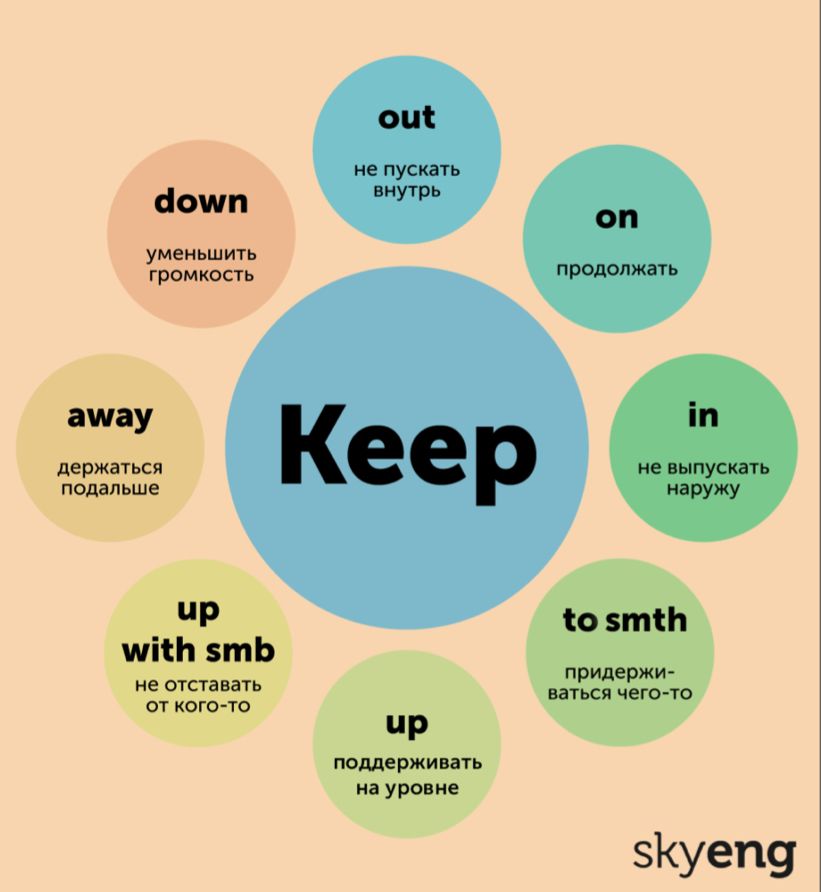 This is fine if our life is really in danger, but if it isn’t life threatening, we want our best thinking, not survival instincts,” he adds.
This is fine if our life is really in danger, but if it isn’t life threatening, we want our best thinking, not survival instincts,” he adds.
8. Have a centering object
When you’re anxious or angry, so much of your energy is being spent on irrational thoughts. When you’re calm, find a “centering object” such as a small stuffed animal, a polished rock you keep in your pocket, or a locket you wear around your neck.
Tell yourself that you’re going to touch this object when you’re experiencing anxiety or frustration. This centers you and helps calm your thoughts. For example, if you’re at work and your boss is making you anxious, gently rub the locket around your neck.
9. Relax your body
When you’re anxious or angry, it can feel like every muscle in your body is tense (and they probably are). Practicing progressive muscle relaxation can help you calm down and center yourself.
To do this, lie down on the floor with your arms out by your side. Make sure your feet aren’t crossed and your hands aren’t in fists.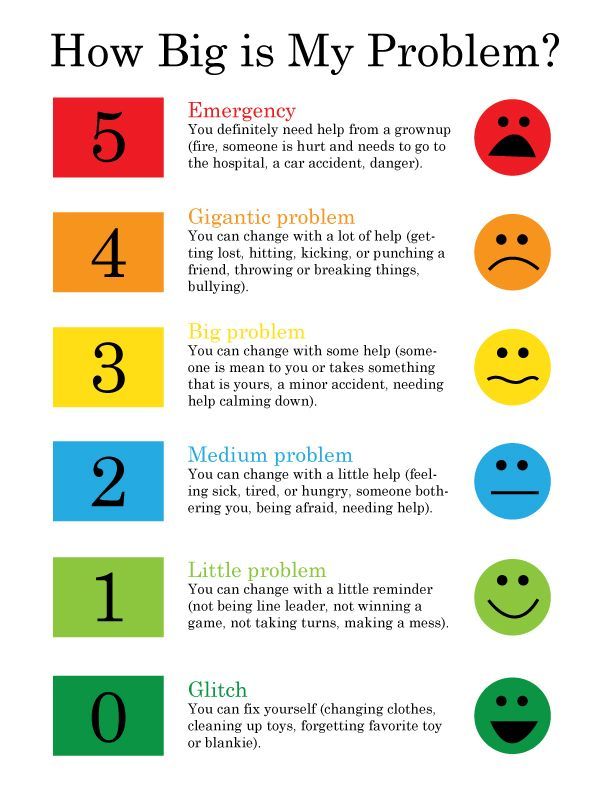 Start at your toes and tell yourself to release them. Slowly move up your body, telling yourself to release each part of your body until you get to your head.
Start at your toes and tell yourself to release them. Slowly move up your body, telling yourself to release each part of your body until you get to your head.
10. Drop your shoulders
If your body is tense, there’s a good chance your posture will suffer. Sit up tall, take a deep breath, and drop your shoulders. To do this, you can focus on bringing your shoulder blades together and then down. This pulls your shoulders down. Take a few deep breaths.
You can do this several times a day.
11. Identify pressure points to calm anger and anxiety
Going for a massage or getting acupuncture is a wonderful way to manage anxiety and anger. But it’s not always easy to find time in your day to make it happen. The good news is, you can do acupressure on yourself for instant anxiety relief.
This method involves putting pressure with your fingers or your hand at certain points of the body. The pressure releases the tension and relaxes your body.
One area to start with is the point where the inside of your wrist forms a crease with your hand.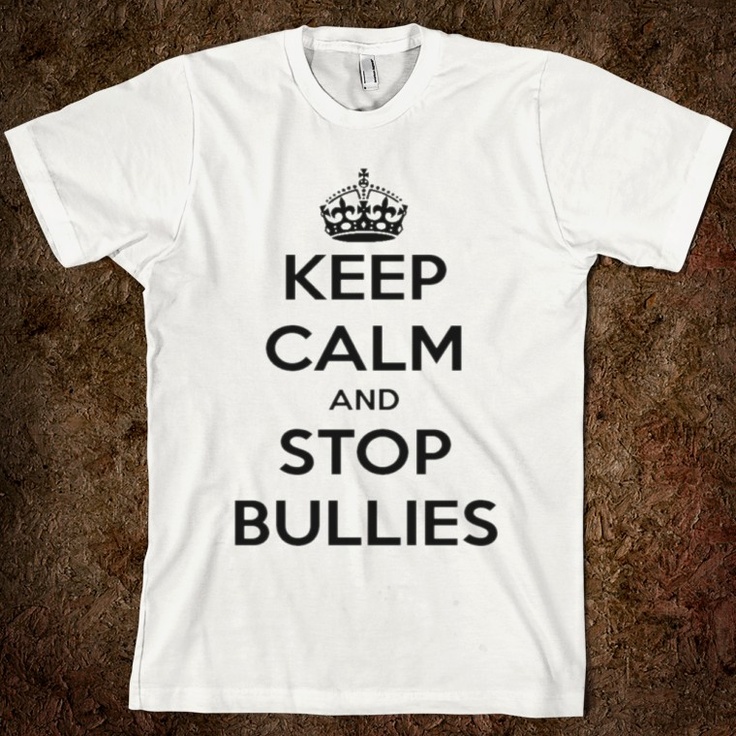 Press your thumb on this area for two minutes. This can help relieve tension.
Press your thumb on this area for two minutes. This can help relieve tension.
If you’re short on time but need to calm down fast, these quick in-the-moment tips can help.
12. Get some fresh air
The temperature and air circulation in a room can increase your anxiety or anger. If you’re feeling tense and the space you’re in is hot and stuffy, this could trigger a panic attack.
Remove yourself from that environment as soon as possible and go outside — even if it’s just for a few minutes.
Not only will the fresh air help calm you down, but also the change of scenery can sometimes interrupt your anxious or angry thought process.
13. Fuel your body
Being hangry never helps. If you’re hungry or not properly hydrated, many relaxation techniques won’t work. That’s why it’s important to slow down and get something to eat — even if it’s just a small snack.
Try nibbling on some dark chocolate. Research shows it can help boost brain health and reduce stress.
Wash it down with a cup of green tea and honey. Studies show green tea can help reduce the body’s stress response. Research has found that honey can help relieve anxiety.
14. Chew gum
Chewing on a piece of gum can help reduce anxiety (and even boost mood and productivity). In fact, research shows people who chew gum regularly are typically less stressed than non-gum chewers.
15.
Listen to musicThe next time you feel your anxiety level cranking up, grab some headphones and tune in to your favorite music. Listening to music can have a very calming effect on your body and mind.
16. Dance it out
Get moving to your favorite tunes. Dancing has traditionally been used as a healing art. Research shows it’s a great way to combat depression and anxiety and increase quality of life.
17. Watch funny videos
Sometimes laughter really is the best medicine. Research has found that laughing provides therapeutic benefits and can help relieve stress and improve mood and quality of life. Do a quick internet search to find funny videos for an instant mood boost.
Do a quick internet search to find funny videos for an instant mood boost.
18. Write it down
If you’re too angry or anxious to talk about it, grab a journal and write out your thoughts. Don’t worry about complete sentences or punctuation — just write. Writing helps you get negative thoughts out of your head.
19. Squeeze a stress ball
When you’re feeling stress come on, try interacting with a stress-relief toy. Options include:
- stress ball
- magnetic balls
- sculpting clay
- puzzles
- Rubik’s cube
- fidget spinner
20. Try aromatherapy
Aromatherapy, or the use of essential oils, may help alleviate stress and anxiety and boost mood. Those commonly used in aromatherapy include:
- bergamot
- cedarwood
- chamomile
- geranium
- ginger
- lavender
- lemon
- tea tree
Add a few drops of essential oil to a diffuser, or mix it with a carrier oil (like coconut oil) and apply to your skin for quick relief.
21. Seek social support
Venting to a trusted friend, family member, or coworker can do wonders. Even if you don’t have time for a full play-by-play phone call, a quick text exchange can help you let it all out and help you feel heard.
Bonus points if you engage with a funny friend who can help you laugh for added stress relief.
22. Spend time with a pet
Interacting with your favorite furry friend can decrease levels of the stress hormone cortisol and lower blood pressure. Quality time with a pet can also help you feel less alone and boost your overall mood.
How to calm down and overcome anxiety and worry - Mediunion Blog
It is human nature to experience anxiety. It appears for various reasons - because of the situation in the world, problems at work or with loved ones, financial situation. This feeling binds a person. It throws off the usual rhythm and cannot think of anything else. What is anxiety? How does it manifest itself? How to calm down and set aside anxiety? - Specialists of the private clinic "Medunion" will tell about this.
Start over. What is anxiety? This is the state of a person when he feels a threat from the outside. This threat provokes fear. This condition manifests itself in everyone in different scales - everything is individual. And this feeling is completely normal for people. It can be attributed to one of the manifestations of natural instincts. Thus, we protect our body, always remaining alert.
However, modern man is little threatened in everyday life. Today, worry and anxiety is becoming more of a problem than a survival aid. It leads to emotional burnout, chronic stress and constant fatigue, due to which we cannot function fully.
Anxiety test - how do I find out if I have a syndrome?
Like any other illness, anxiety has its own symptoms. In patients with such a diagnosis, the following thoughts are constantly spinning in their heads:
- I feel stuck
- I am constantly tormented by the past
- I am trying to calm down and get rid of my anxiety, but I am not succeeding
- Not only me, but also my relatives, work and family suffer from this
- I am worried about what will happen in the future, I am equally worried about tomorrow and what will happen in a few years
- I feel more comfortable avoiding crowded places
- Anxiety appears inside without a reason
- Obsessive thoughts do not let you calm down
- I am often distracted from business and work tasks
- I feel tired, but I am constantly in a state of agitation
It turns out that a person is constantly worried about something. The obsessive “what if this” or “what if that” does not leave the head. For example, suddenly I don’t succeed, or suddenly I don’t earn the right amount of money.
The obsessive “what if this” or “what if that” does not leave the head. For example, suddenly I don’t succeed, or suddenly I don’t earn the right amount of money.
The disease also has physical manifestations:
- Excessive sweating
- Trembling in the knees
- Attacks of nausea and vomiting
- Thirst
- Rumbling in the stomach
4 proven ways to overcome anxiety
With such a syndrome, it is better to consult a specialist. It will help to suppress the permanent feeling of anxiety and sort out the cause of the problem.
However, there are times when anxiety overcomes at the most inopportune moment. What to do in this case? To do this, socialists have developed several exercises to suppress anxiety.
- Breath concentration
Our body is a single whole, all systems and processes of which are interconnected. When we experience anger or excitement, the pulse quickens. At rest, it slows down. Headaches are caused by worry and anxiety. Prolonged inactivity will lead to muscle discomfort, which is why your body will send signals to move with all its might.
At rest, it slows down. Headaches are caused by worry and anxiety. Prolonged inactivity will lead to muscle discomfort, which is why your body will send signals to move with all its might.
In this case, you need to focus on breathing. It's simple - obsessive thoughts increase the number of breaths and exhalations, and calmness, on the contrary, will relieve us of unnecessary stress and normalize breathing.
To do this, you just need to take your stomach and take slow breaths in and out. Focus on this process. Think about how the chest fills with air and releases it. Repeat several times until breathing returns to normal.
- Therapy with the question “What if?”
People with anxiety are constantly bothered by “what if?” questions. or “what if?”. What if we don't suit each other? Suddenly I do not cope with my duties at work? But what if the boss calls for a meeting in order to cut my salary or even fire me?
Questions like this pop up spontaneously.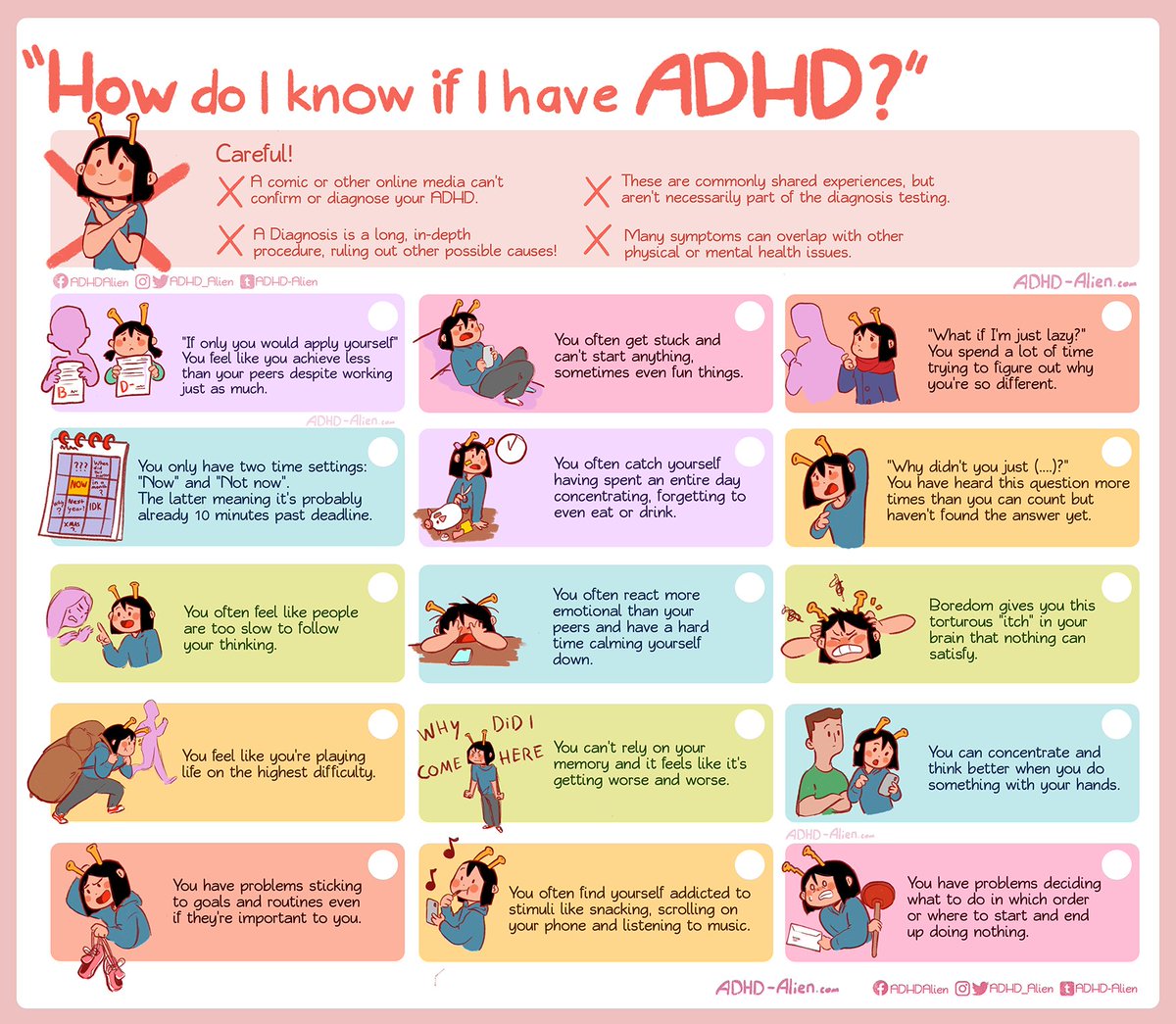 They are uncontrollable, as they are associated with fear and worries. Salvation from this is a positive answer to these questions. For example, imagine that that scary meeting with your boss has nothing to do with the fact that you are not doing your job well. On the contrary, you are too critical and are considered an example of an excellent employee, as you regularly perform planned tasks. The boss called you in to express his gratitude in the form of an encouragement - an increase in salary or a promotion.
They are uncontrollable, as they are associated with fear and worries. Salvation from this is a positive answer to these questions. For example, imagine that that scary meeting with your boss has nothing to do with the fact that you are not doing your job well. On the contrary, you are too critical and are considered an example of an excellent employee, as you regularly perform planned tasks. The boss called you in to express his gratitude in the form of an encouragement - an increase in salary or a promotion.
It would be useful to treat this with a little humor and imagine a completely absurd outcome. For example, the director of a company drops everything and moves to the other side of the world. He leaves you in charge without explaining the reasons. By approaching anxiety with humor, you will change the vector of your thoughts and feel a little better.
- Exercise “I have an idea!”
Constant thoughts about the subject of our anxiety move us from the present to the past and future. We are no longer focused specifically on it and its solution. We think about the reasons for its appearance and the negative outcome. The following exercise helps to return to reality and calm down. Human experiences are just thoughts, and not always justified.
We are no longer focused specifically on it and its solution. We think about the reasons for its appearance and the negative outcome. The following exercise helps to return to reality and calm down. Human experiences are just thoughts, and not always justified.
Think about what specifically worries you. Speak the problem out loud and remind yourself that the negative outcome of the situation is in your head. In reality, this has not happened yet. For example:
“It seems to me that the upcoming meeting with partners from China will be terrible. It's just a thought in my head. It is better to sit down and further study all the materials in order to better prepare for the discussion.
Better to retire and say it out loud. Then it will become easier for you to return to your previous affairs and not live with what has not yet happened or has already happened.
- Stop self-criticism
Self-judgment and blaming others usually makes you think in terms of limitations.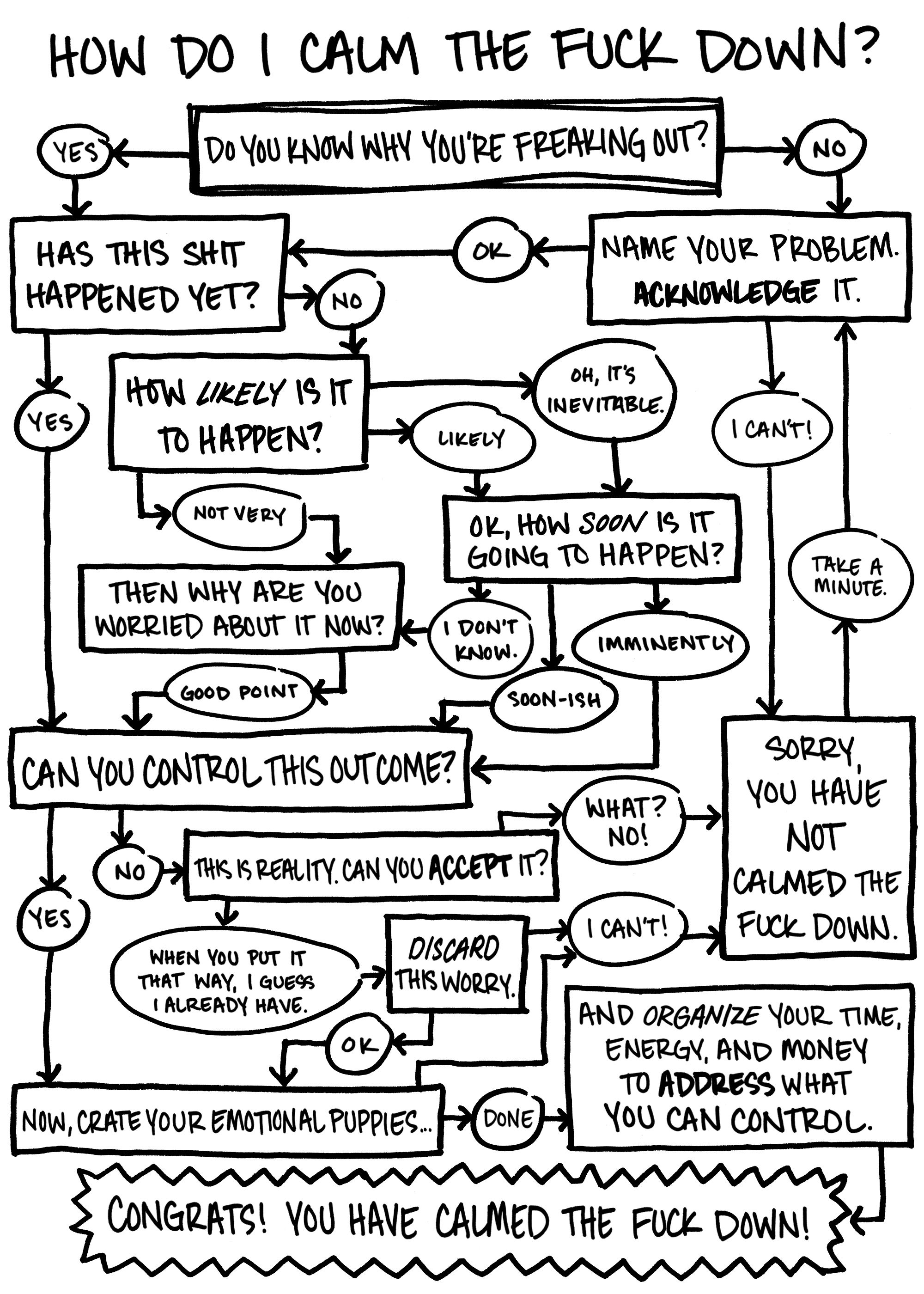 This approach takes away not only energy, but also increases the level of anxiety.
This approach takes away not only energy, but also increases the level of anxiety.
The solution to this problem is the acceptance of one's own and other people's shortcomings. This is considered the basis of any work on oneself.
To stop the flow of restless thoughts in time, say the mantra. A mantra is a statement that reminds you of something important. Say to yourself: “Today I don’t blame anyone for anything.” Come up with a mantra that will help you, and repeat it to yourself as often as possible so as not to dwell on condemnation.
Understanding why you can't "just calm down"
June 8, 2022 Health
Sometimes anxiety is not just an experience, but a disease.
You can listen to this article. If it's convenient for you, turn on the podcast.
What causes anxiety
Anxiety is a natural response to stress. The body feels danger, triggers the “fight or flight” reaction, releases adrenaline and noradrenaline into the blood, the heart begins to beat faster.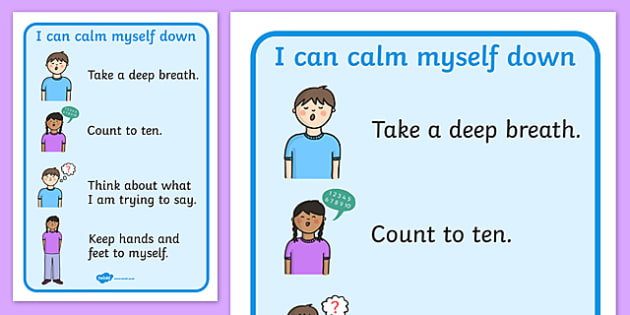
But in some cases anxiety attacks arise and end quickly. And in others they become long and destructive. The scenario depends on why the alarm occurred.
Events that happen to you
Perhaps this is the most common cause of unrest. We are worried about the future. We care about the health and well-being of loved ones. We are wondering if there is enough money to pay.
This daily anxiety is not dangerous. It goes away when the stressful situation ends. And it decreases when you switch to some kind of routine calming activity, get support from friends, or just tell yourself: “Pull yourself together, rag!”
Hormonal changes
A striking example is premenstrual syndrome in women. Hormonal surges affect the functioning of the brain, which is why even a girl who is always balanced and generally satisfied with life can feel unhappy, offended, deeply worried about innocent reasons.
There are more serious hormonal disorders. For example, hyperthyroidism (increased production of thyroid hormones) increases nervousness.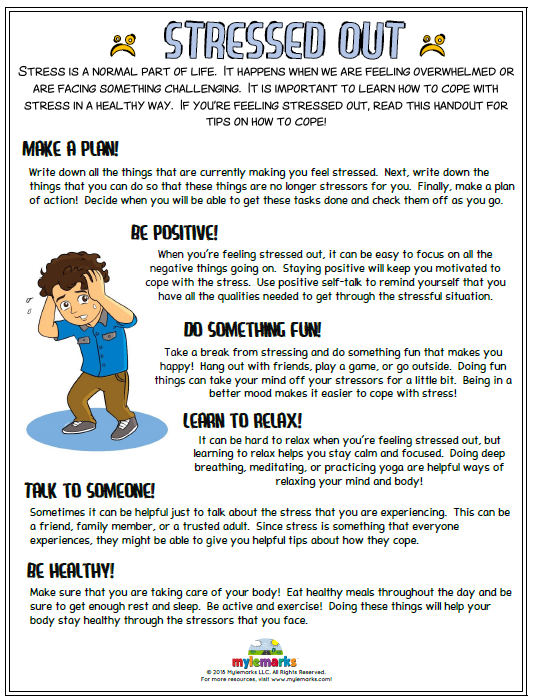 This means that a person with such a disease reacts more sharply and brighter to the slightest stress.
This means that a person with such a disease reacts more sharply and brighter to the slightest stress.
Chronic stress
It develops if you find yourself in a stressful situation day after day. The fight-or-flight response becomes constant, and the endless hormonal blast eventually depletes the body's reserves.
Fear and excitement remain, because the stressful situation has not gone away. But in addition to them, new symptoms also appear: weakness, fatigue, a feeling of a lump in the throat, an acute desire to wrap yourself in a blanket and hide from the world.
As a result, things can come to the development of psychosomatic diseases and mental disorders.
Depression
The word "depression" is often used as a synonym for "low mood" or "low energy". But this is incorrect. Depression is a complete mental disorder caused by an imbalance of chemicals in the brain. This is a serious disease, one of the symptoms of which is anxiety.
If left untreated, depression can lead to other problems, such as heart and vascular problems, and other mental disorders.
Anxiety disorder
An anxiety disorder is said to be when anxiety—permanent or in the form of acute attacks—lasting more than six months presents itself with physical symptoms: rapid heartbeat, sweating, weakness, inability to concentrate on anything other than fear.
But it is possible to assume this mental disorder even earlier - according to a number of characteristic symptoms inherent in different types of anxiety disorders. The most common are listed below.
1. Generalized Anxiety Disorder
Behind this definition lies the constant and excessive worrying about the smallest things, which is almost uncontrollable and affects the physical well-being. For example, you sincerely, to the point of trembling in the knees and pain in the region of the heart, are worried if one of the family members is delayed for five minutes. Or break out in a cold sweat every time you take on a new project because you're always afraid of making a mistake. It happens that even the ringing of the phone leads to panic.
Generalized anxiety disorder is often accompanied by other types of anxiety disorders or depression.
2. Social phobia
It is also social anxiety disorder. A person is very sensitive to the attitude of others. He is terribly afraid of being ridiculed, rejected, unnoticed.
This fear is so great and uncontrollable that if it is necessary to “get out in front of people”, the legs of the social phobe literally give way. Therefore, he avoids social contacts with all his might.
Find out 😱
- How to know if you are a true social phobe
3. Health-related anxiety disorder
It usually occurs in those who suffer from a serious physical illness. For example, diabetes.
Diabetics may worry about constantly monitoring their weight, diet, and blood sugar levels. They worry because of the high risk of complications: from hypoglycemia to heart or kidney disease, stroke.
Fear also haunts those diagnosed with cardiovascular disease, asthma and other respiratory disorders, cancer, skin diseases, and so on.
4. Phobias and irrational fears
They are caused by specific objects or situations. For example, it may be a fear of spiders - so hypertrophied that a person cannot enter a room if he notices a piece of cobwebs. Or claustrophobia, which prevents a person from using elevators or the subway. Or fear of flying.
5. Panic disorder
It is manifested by repeated attacks of severe panic. They do not last long, most often a matter of minutes, but they have extremely unpleasant symptoms: shortness of breath, heart palpitations, chest pain, fear of impending death.
During a panic attack, a person does not control his behavior: he may fall or scream. Because of the fear that the attack could recur at any time, new disorders appear - the same social phobia or anxiety associated with a state of health.
Memorize 😤
- What are panic attacks and how to cope with them
Other mental disorders
Excessive and constant anxiety is a characteristic symptom of other mental disorders.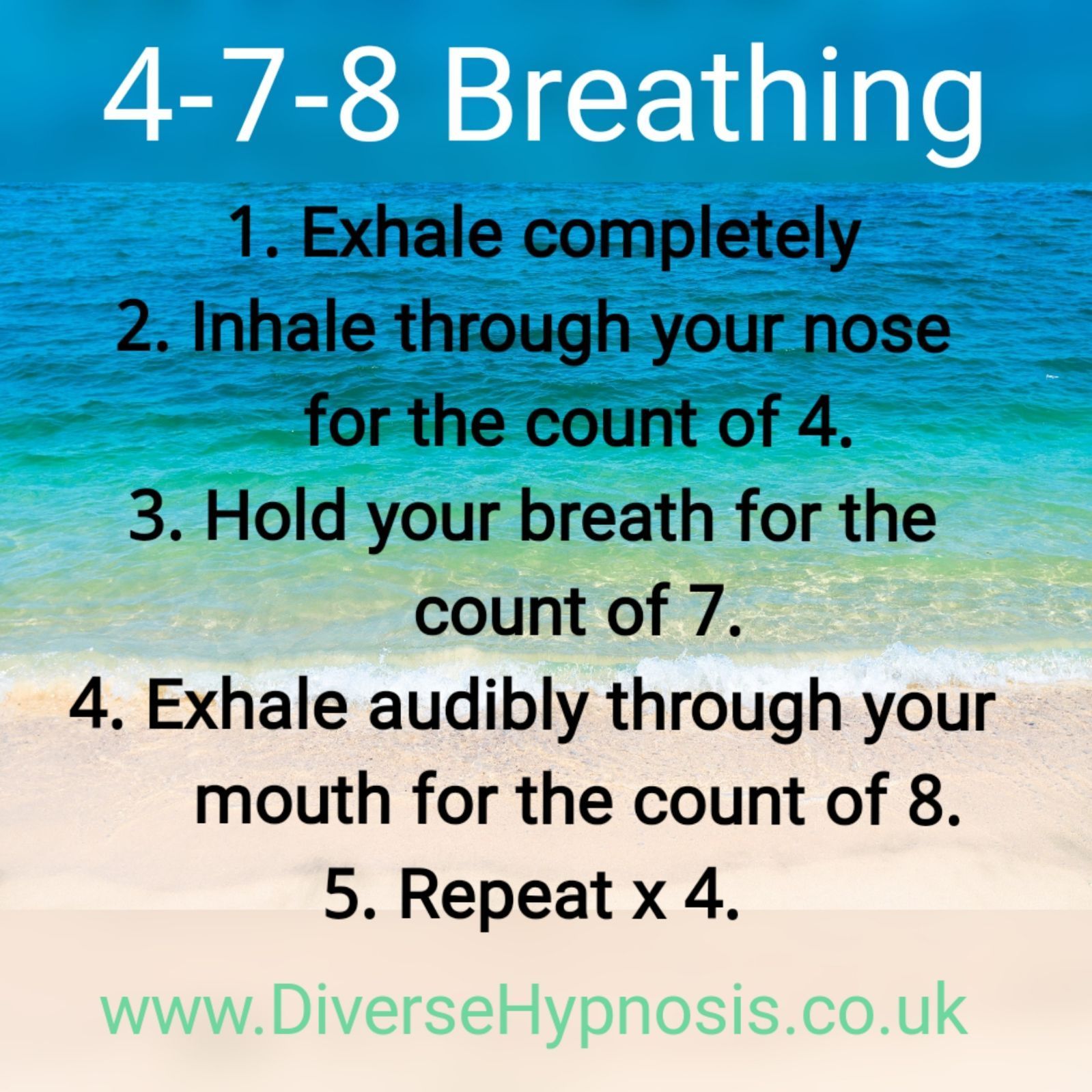 For example, schizophrenia, obsessive-compulsive disorder (compulsive disorder), manic-depressive psychosis, alcohol and drug use disorders.
For example, schizophrenia, obsessive-compulsive disorder (compulsive disorder), manic-depressive psychosis, alcohol and drug use disorders.
How to know what it is you have
Basically, the question should be: “Do I have anxiety that I can manage, or is the situation out of control?”
In fact, the boundary between these states is rather arbitrary. To find it, experts suggest answering seven questions:
- Do you regularly catch yourself being worried, irritated, tense, and this becomes your habitual state?
- Does anxiety prevent you from working, studying, communicating with people, building relationships?
- Do you have an irrational fear (for example, you are afraid to go down the subway), but you can't overcome it?
- Do you believe that if some things are not done right (like not putting shoes on shelves or doing a little ritual before the start of the day), something catastrophic can happen?
- Are there situations or activities that you regularly avoid because you are afraid?
- Do you have sudden, severe panic attacks during which you cannot control yourself?
- Do you feel that the world is not a safe place, where just a little mistake is enough to become a victim of scammers, get sick, lose money or lose close friends?
In principle, a single "yes" is enough to suspect an anxiety or other mental disorder.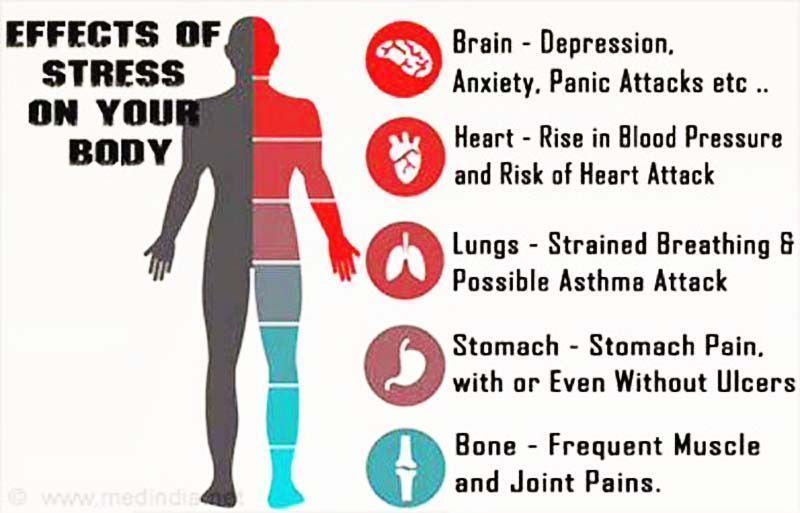 If there are more than one of these answers, you need help.
If there are more than one of these answers, you need help.
How to get rid of anxiety if it is not associated with a mental disorder
In this case, the usual methods to control stress will help. There are dozens of them. Here are the most popular and effective ones.
Take a few deep breaths and long exhales
Stanford University scientists have discovered an area in the brain that links the frequency and depth of breathing and emotional state. As it turned out, the more actively and superficially we breathe, the more nervous and excited we experience.
Play soothing music or listen to nature sounds
In 2017, researchers found that when people listen to nature sounds, their stress level is noticeably reduced. The same applies to calm muffled music.
By the way, here is the most soothing track recorded by the scientists of the British Academy of Sound Therapy:
Switch off the topic that makes you anxious
For example, if you are nervous about the news, turn off the TV and log out of social networks.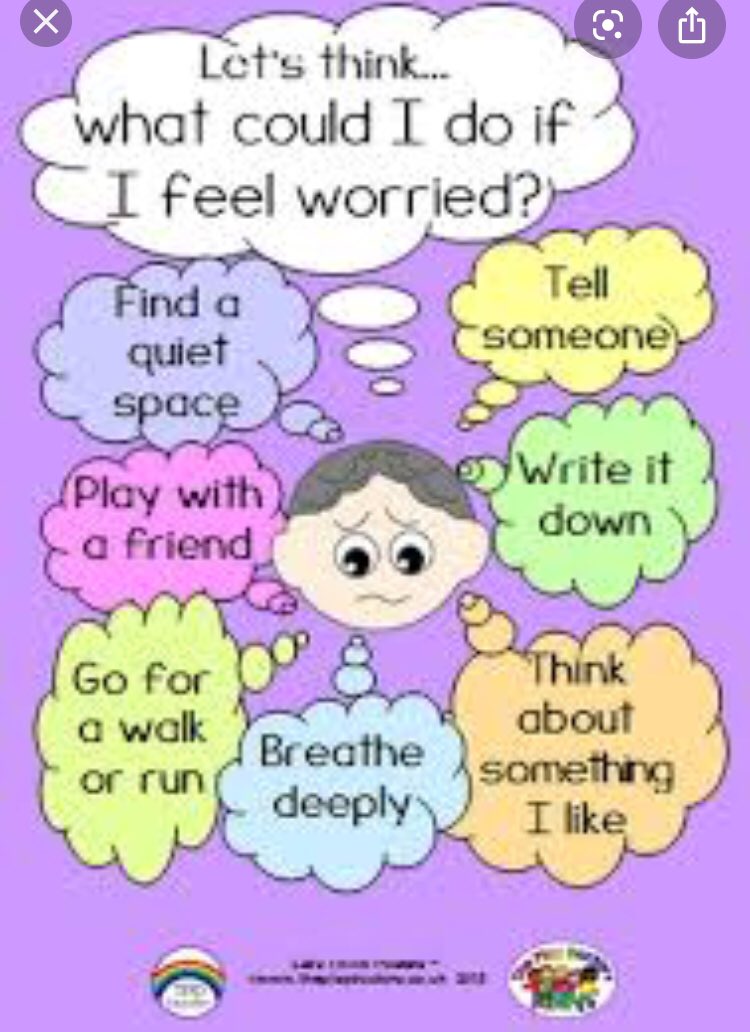 Instead, watch a comedy or romance, read a book, play with your cat, call a friend. Your task is to occupy your head with something else, to distract yourself from a stressful situation.
Instead, watch a comedy or romance, read a book, play with your cat, call a friend. Your task is to occupy your head with something else, to distract yourself from a stressful situation.
Hold hands
There are many options. Start knitting. Plant flowers under windows. Read a book to your child or do a couple of physical experiments with him. Wash the dishes or clean the apartment. These activities will help you switch.
Learn to say "stop" to yourself.
Watch your thoughts and stop at the right time. If you find yourself thinking about something disturbing, be aware of this fact. Imagine that you take a thought that causes anxiety into a fist and put it aside. And then consciously begin to think about something else - about the situation that you can control.
Try also 😨
- 22 unexpected ways to deal with anxiety
How to get rid of anxiety if it is caused by a mental disorder
In this case, deep breathing, unfortunately, is almost useless.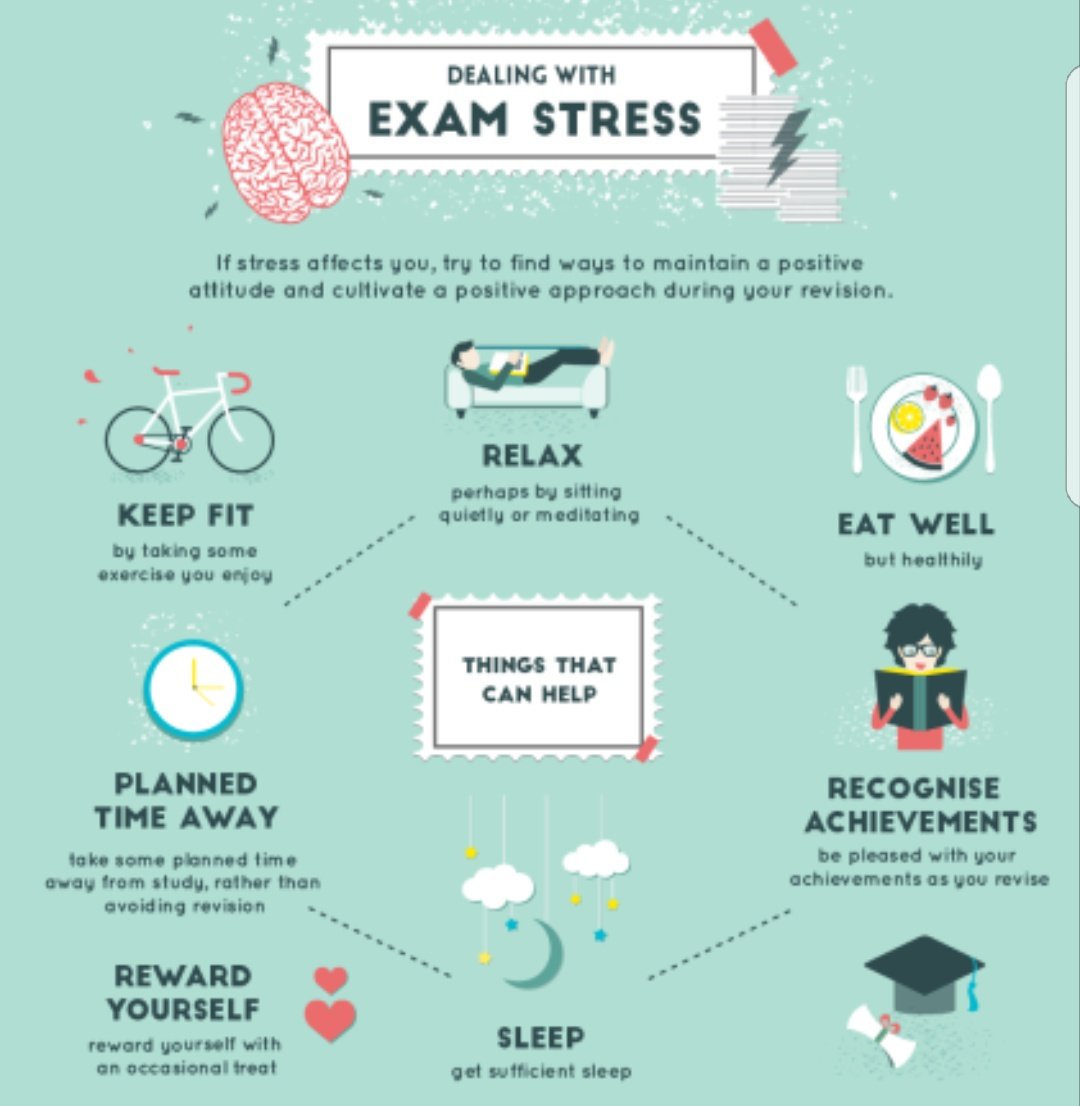 If your anxiety has reached the level of a mental disorder, you will need help.
If your anxiety has reached the level of a mental disorder, you will need help.
Talk to your doctor
You can start by visiting your doctor, telling him about your symptoms and asking for recommendations.
The sooner you seek help, the easier it will be to regain your cheerfulness and positive attitude towards the world.
Another option is to immediately contact a psychotherapist. The specialist will be able to determine exactly what is happening to you and what kind of violation is preventing you from living.
Change your lifestyle
Most likely, the doctor will advise you to change your habits first.
- Avoid alcohol, coffee, high sugar drinks and energy drinks. They excite the nervous system and can increase anxiety.
- Exercise regularly. Physical activity increases the level of endorphins, hormones associated with good mood.
- Eat well. This will increase your body's reserves and reduce the negative effects of the fight-or-flight response.
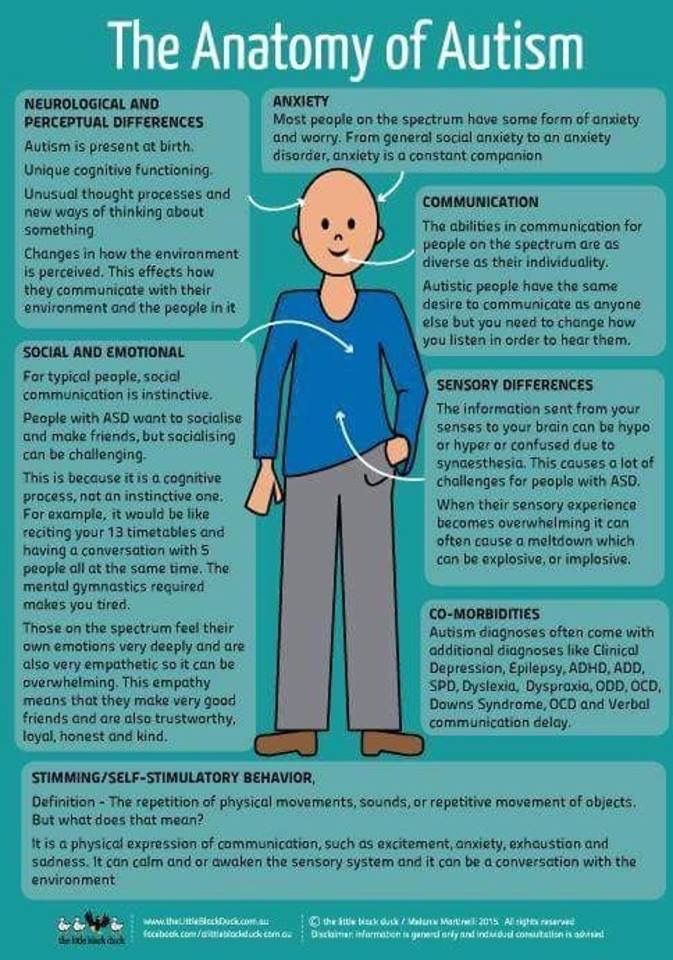
- Get at least 8 hours of sleep.
- Try relaxation techniques. It can be regular meditation or yoga classes.
Get psychotherapy
This is the most effective way to deal with anxiety and other disorders. There are various types of psychotherapy, but the most popular are cognitive-behavioral and exposure therapy.
1. Cognitive Behavioral Therapy
Its idea is that your well-being does not depend on a stressful situation, but on how you feel about it. Therefore, the therapist will teach you to
- Identify negative thoughts - what exactly you think about when you start to worry. Example: "They will laugh at me."
- Assess and challenge negativity. It means asking questions: “Is the bad thing that scares me really going to happen? And if so, will it really be disastrous? Maybe it's not so scary?
- Replace negative thoughts with realistic ones.
2. Exposure Therapy
It is based on the assumption that avoiding stressful situations only makes fear worse. To learn how to control it, you need to meet him face to face. Of course, this won't happen right away.
To learn how to control it, you need to meet him face to face. Of course, this won't happen right away.
First, you and your doctor will write down the steps that will help you get rid of anxiety for you. For example, if your goal is to overcome your fear of flying, the list might include the following steps:
- look at photos of aircraft, cabin, and passengers;
- reread good flight reviews;
- describe what reward awaits you after landing;
- buy a plane ticket;
- check in for a flight;
- have tea by the porthole.
Then, under the guidance of your therapist, you will start working on the list. The goal is to dwell on each frightening item until the fear subsides. Most of the time will be spent on working out the first steps.
As you complete each item, you will put a bold tick. This will help you stay confident that you are in control of the situation and make it easier to keep moving towards your goal.
